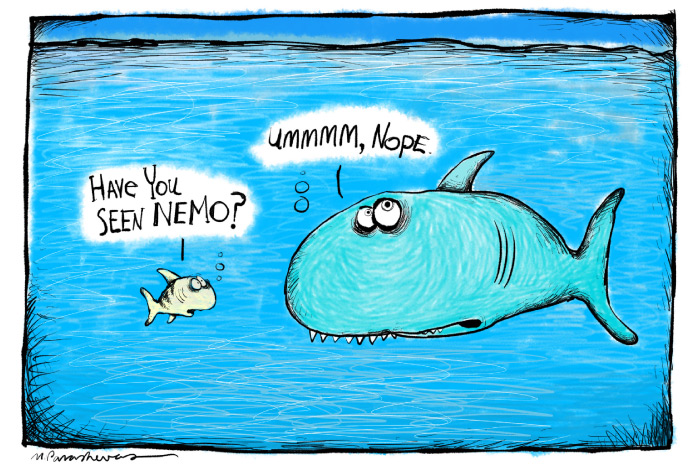Down, Down, Down: Under the Sea Where 99% of Life Dwells

I read my three-year-old grandson, Owen, a bedtime story the other night. The book is Down, Down, Down about the ocean and all the creatures in it, starting from the surface of the ocean and going down. The further I got into this book, the more I began to feel humility about our place on this planet and anger about how seriously the human race takes itself.
The first page of the book shows the planet Earth, with brown for land and blue for the sea. I read to Owen how more than two thirds of the Earth is covered by water, and only one third is land. Furthermore, life on land takes place from the surface up a few hundred feet and down into the Earth a few hundred feet the other way. Life in the sea goes down from the surface 40,000 feet. There’s way more life down there than up here.
I turned the page. The next page shows some sea life leaping up into the air—our realm. Drawings show a dolphin leaping high, a school of flying fish, even a giant whale surfacing. The names of them are underneath them. Owen points to them and says correctly what they are. He’s been read this book before.
The next page shows the creatures just under the surface of the sea. They include a school of striped bass (as we have Out East), a shark, a big squid and a tortoise. There’s also a seal, an actual land animal, diving down into the water to see what’s what.
On the next page are some really large creatures further down. Here, the pressure on sea creatures is about the same as the air pressure on humans up above. There’s a drawing of the largest fish we know of, a shark. And there’s a giant octopus. I point out to Owen how some creatures have teeth, but others have “baleen,” filters that screen out all but the smallest creatures, mostly plankton.
On the pages that follow, I tell Owen how the pressure of the sea is greater and greater and how humans would get crushed going down there unless they were in a submarine. The light from the sun is dimmer and many creatures have bigger eyes to see better. One of them has a big stalk sticking out of the top of his head with a fluorescent light on it to lead the way. It tells like-minded creatures to come over and meet up.
Further down there is virtually no light at all. The picture shows a small creature about to be eaten by a bigger fish, but it’s able to blind the bigger fish by emitting some white sticky goo into its eye. The bigger fish can’t get it off for a while and so gets eaten himself for being unable to see who is about.
Finally, we get down to where there is no light. I told Owen, reading from the book, that only once humans got down this far. It was 1960 and a group of them descended inside a very, very strong steel submarine. But then they had to come right back up.
At this point, we are only halfway through the book. In the remaining chapters, the pages show the most fantastic creatures imaginable, including one level where it appears to be snowing because bits of plankton are descending slowly down through that level.
Further down is deep mud, because that’s where the snow accumulates, and there are little critters in there. And under that is a level with perhaps even more remarkable creatures—but we’re not sure—we’ve never been there.
When I got done reading, it was off to bed for Owen.
And I thought, from the sea creatures’ perspective, climate change is just more ocean space for them and less land space for us. Also, by volume, right now it’s 99% inside the water and 1% land up and down a few dozen feet. So the sea creatures probably won’t even notice their new additional living space. And I don’t think how we’ve trashed the ocean surface is any big deal to them.
So who the hell do we think we are? Good night, Owen.



